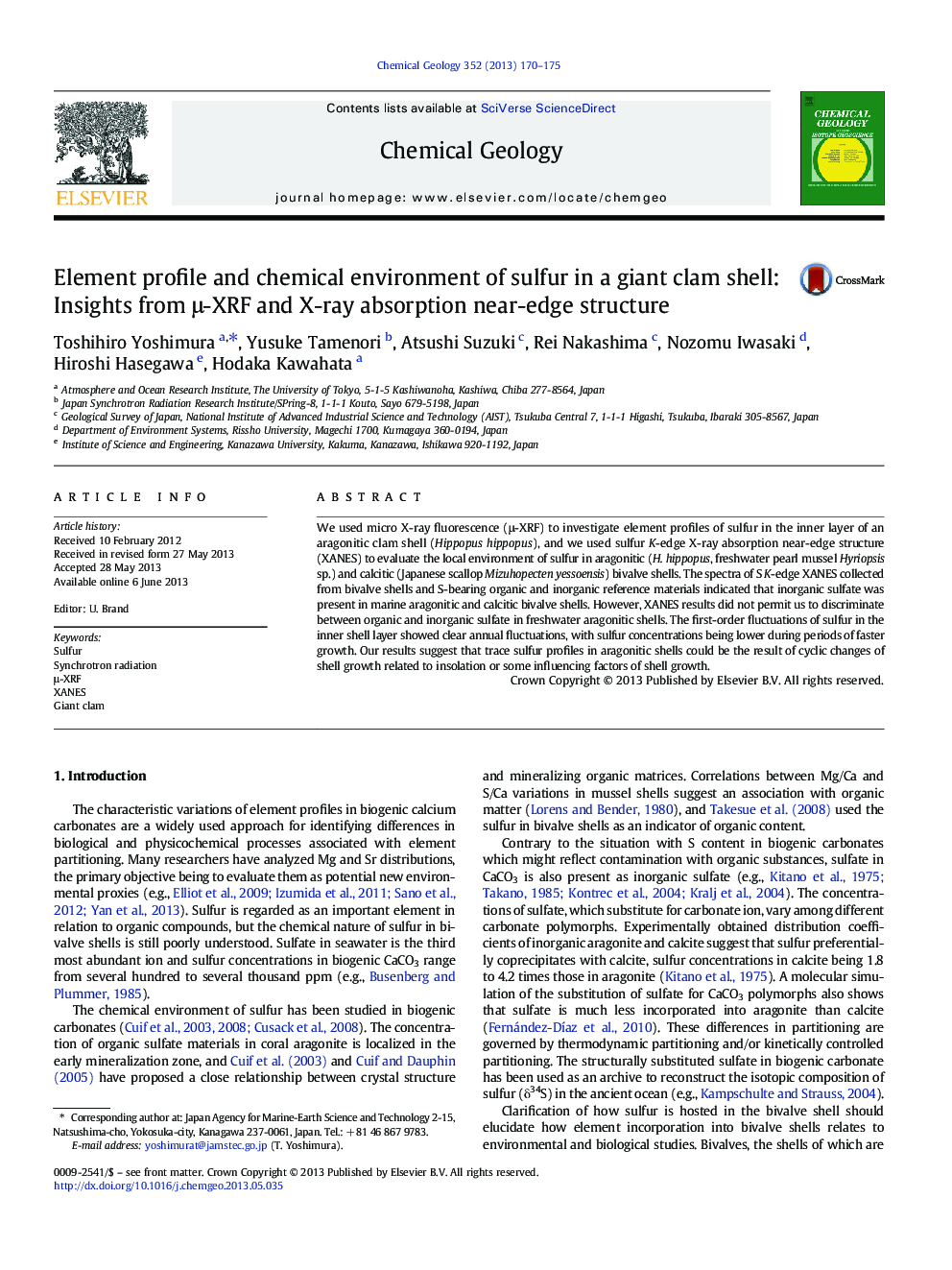| Article ID | Journal | Published Year | Pages | File Type |
|---|---|---|---|---|
| 4698976 | Chemical Geology | 2013 | 6 Pages |
•We investigated element profiles of sulfur in a giant clam shell.•Sulfur in clam, mussel and scallop shells is predominantly in sulfate compounds.•Inorganic sulfate was present in marine aragonitic and calcitic bivalve shells.•Sulfur showed annual fluctuations being lower during periods of faster growth.•S fluctuation relates insolation or some influencing factors of shell growth.
We used micro X-ray fluorescence (μ-XRF) to investigate element profiles of sulfur in the inner layer of an aragonitic clam shell (Hippopus hippopus), and we used sulfur K-edge X-ray absorption near-edge structure (XANES) to evaluate the local environment of sulfur in aragonitic (H. hippopus, freshwater pearl mussel Hyriopsis sp.) and calcitic (Japanese scallop Mizuhopecten yessoensis) bivalve shells. The spectra of S K-edge XANES collected from bivalve shells and S-bearing organic and inorganic reference materials indicated that inorganic sulfate was present in marine aragonitic and calcitic bivalve shells. However, XANES results did not permit us to discriminate between organic and inorganic sulfate in freshwater aragonitic shells. The first-order fluctuations of sulfur in the inner shell layer showed clear annual fluctuations, with sulfur concentrations being lower during periods of faster growth. Our results suggest that trace sulfur profiles in aragonitic shells could be the result of cyclic changes of shell growth related to insolation or some influencing factors of shell growth.
